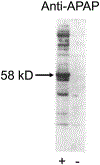The development and hepatotoxicity of acetaminophen: reviewing over a century of progress
- PMID: 33103516
- PMCID: PMC8427730
- DOI: 10.1080/03602532.2020.1832112
The development and hepatotoxicity of acetaminophen: reviewing over a century of progress
Abstract
Acetaminophen (APAP) was first synthesized in the 1800s, and came on the market approximately 65 years ago. Since then, it has become one of the most used drugs in the world. However, it is also a major cause of acute liver failure. Early investigations of the mechanisms of toxicity revealed that cytochrome P450 enzymes catalyze formation of a reactive metabolite in the liver that depletes glutathione and covalently binds to proteins. That work led to the introduction of N-acetylcysteine (NAC) as an antidote for APAP overdose. Subsequent studies identified the reactive metabolite N-acetyl-p-benzoquinone imine, specific P450 enzymes involved, the mechanism of P450-mediated oxidation, and major adducted proteins. Significant gaps remain in our understanding of the mechanisms downstream of metabolism, but several events appear critical. These events include development of an initial oxidative stress, reactive nitrogen formation, altered calcium flux, JNK activation and mitochondrial translocation, inhibition of mitochondrial respiration, the mitochondrial permeability transition, and nuclear DNA fragmentation. Additional research is necessary to complete our knowledge of the toxicity, such as the source of the initial oxidative stress, and to greatly improve our understanding of liver regeneration after APAP overdose. A better understanding of these mechanisms may lead to additional treatment options. Even though NAC is an excellent antidote, its effectiveness is limited to the first 16 hours following overdose.
Keywords: APAP-protein adducts; Acetaminophen overdose; biomarkers; drug metabolism; drug-induced liver injury; liver injury; liver regeneration; mitochondria; oxidative stress; reactive nitrogen.
Figures






Similar articles
-
Dual Role of Epidermal Growth Factor Receptor in Liver Injury and Regeneration after Acetaminophen Overdose in Mice.Toxicol Sci. 2017 Feb;155(2):363-378. doi: 10.1093/toxsci/kfw213. Epub 2016 Oct 23. Toxicol Sci. 2017. PMID: 28123000 Free PMC article.
-
A mitochondrial journey through acetaminophen hepatotoxicity.Food Chem Toxicol. 2020 Jun;140:111282. doi: 10.1016/j.fct.2020.111282. Epub 2020 Mar 21. Food Chem Toxicol. 2020. PMID: 32209353 Free PMC article. Review.
-
Novel mechanisms of protection against acetaminophen hepatotoxicity in mice by glutathione and N-acetylcysteine.Hepatology. 2010 Jan;51(1):246-54. doi: 10.1002/hep.23267. Hepatology. 2010. PMID: 19821517 Free PMC article.
-
The gap junction inhibitor 2-aminoethoxy-diphenyl-borate protects against acetaminophen hepatotoxicity by inhibiting cytochrome P450 enzymes and c-jun N-terminal kinase activation.Toxicol Appl Pharmacol. 2013 Dec 15;273(3):484-91. doi: 10.1016/j.taap.2013.09.010. Epub 2013 Sep 23. Toxicol Appl Pharmacol. 2013. PMID: 24070586 Free PMC article.
-
Current etiological comprehension and therapeutic targets of acetaminophen-induced hepatotoxicity.Pharmacol Res. 2020 Nov;161:105102. doi: 10.1016/j.phrs.2020.105102. Epub 2020 Jul 30. Pharmacol Res. 2020. PMID: 32738495 Review.
Cited by
-
The immunological mechanisms and therapeutic potential in drug-induced liver injury: lessons learned from acetaminophen hepatotoxicity.Cell Biosci. 2022 Nov 22;12(1):187. doi: 10.1186/s13578-022-00921-4. Cell Biosci. 2022. PMID: 36414987 Free PMC article. Review.
-
Acetaminophen-Induced Hepatotoxicity in Obesity and Nonalcoholic Fatty Liver Disease: A Critical Review.Livers. 2023 Mar;3(1):33-53. doi: 10.3390/livers3010003. Epub 2023 Jan 12. Livers. 2023. PMID: 36713231 Free PMC article.
-
NAPQI is absent in the mouse brain after sub-hepatotoxic and hepatotoxic doses of acetaminophen.Toxicol Sci. 2025 Jun 1;205(2):274-278. doi: 10.1093/toxsci/kfaf034. Toxicol Sci. 2025. PMID: 40065514
-
Neutrophil extracellular traps promote acetaminophen-induced acute liver injury in mice via AIM2.Acta Pharmacol Sin. 2024 Aug;45(8):1660-1672. doi: 10.1038/s41401-024-01239-2. Epub 2024 Apr 8. Acta Pharmacol Sin. 2024. PMID: 38589685 Free PMC article.
-
6-Hydroxy-2,2,4-trimethyl-1,2-dihydroquinoline Demonstrates Anti-Inflammatory Properties and Reduces Oxidative Stress in Acetaminophen-Induced Liver Injury in Rats.Curr Issues Mol Biol. 2023 Oct 12;45(10):8321-8336. doi: 10.3390/cimb45100525. Curr Issues Mol Biol. 2023. PMID: 37886968 Free PMC article.
References
-
- Agarwal R, MacMillan-Crow LA, Rafferty T, Saba H, and Hinson JA 2010. Acetaminophen-induced alterations in hepatic mitochondrial manganese superoxide dismutase MnSOD; SOD2) activity in mice. Experimental Biology 2010 Abstracts. C45:225.
Publication types
MeSH terms
Substances
Grants and funding
LinkOut - more resources
Full Text Sources
Medical
Research Materials
